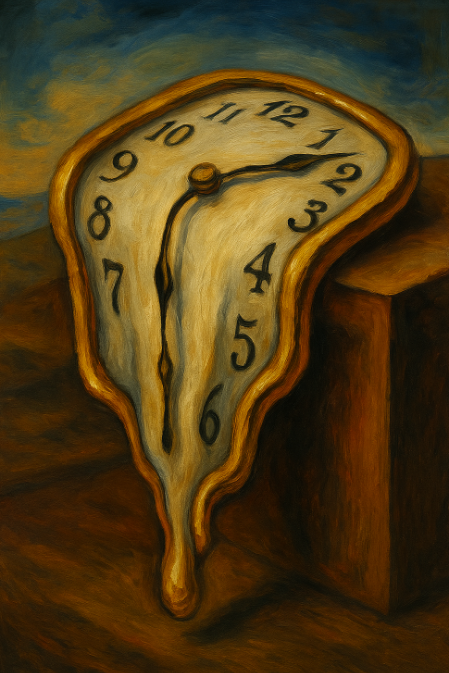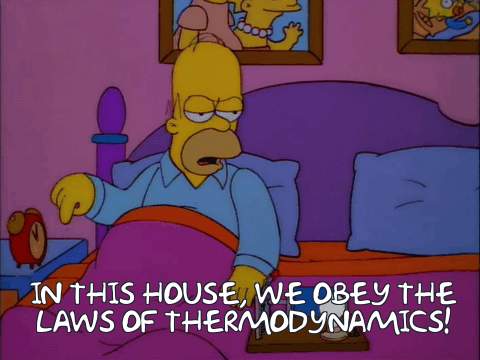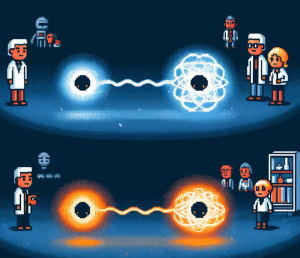
What Happens When Time Flows Both Ways?
You’ve probably never seen an egg un-crack itself. Or coffee spontaneously leap from a mug back into a pot. That’s because we all live by the “arrow of time”—the one-way street where things age, crumble, melt, and decay.
But here’s the twist: the laws of physics don’t actually require time to move forward.
Wait, what?
Yes—deep down at the quantum level, nature doesn’t prefer the future over the past. And a new study just dropped a bombshell: even our favorite tools for explaining heat, randomness, and chaos—the so-called “Markovian models”—don’t break this symmetry unless we force them to.
In fact, the study suggests time might flow both ways.
Let’s unravel what this means—and why it could change how we think about everything from black holes to broken glasses.
You’ve Been Time-Tricked
From the Big Bang to your morning bagel, we experience time as a clear progression: past, present, future. It feels baked into the universe. But physicists have long puzzled over a contradiction. The basic laws that govern particles, like Newton’s equations or Schrödinger’s wave function, don’t care which direction time runs.
If you filmed atoms bouncing off each other and played it backward, the movie would still make perfect physical sense.
So where does this “arrow” come from?
For over a century, the best guess was: probability. Austrian physicist Ludwig Boltzmann argued that as systems get more chaotic, they naturally move from low-entropy (ordered) states to high-entropy (disordered) ones. Like a shuffled deck of cards, things just get messier over time. But this argument had critics, and it left one uncomfortable hole: even entropy-based models ultimately rely on a chosen direction of time to begin with.
Enter: Quantum Systems and the Infinite Heat Bath
The new study zooms in on what physicists call open quantum systems. Think of a small system (like a particle or qubit) interacting with its environment—a massive “heat bath” made up of zillions of other particles.
To study how this little system changes over time, scientists use something called the Markov approximation. It’s like saying, “Let’s ignore the system’s memory. What happens next depends only on what’s happening now.”
This simplification works wonders for modeling things like lasers, chemical reactions, and even quantum computers.
But here’s the kicker: it’s usually thought to break time-reversal symmetry. That is, the resulting equations suggest that stuff only relaxes into the future—not the past.
This new research says… not so fast.
Two Arrows, Not One
By digging deep into how these equations are derived, the researchers found that if you apply the Markov approximation symmetrically—accounting for both positive and negative times—you get something remarkable:
The system still thermalizes. Entropy still increases. But it happens in both directions of time.
That’s right. The math predicts dissipation and decoherence (the technical term for quantum “messiness”) happening as you move away from a central point—into both the past and the future.
So what’s breaking the symmetry in the real world? Just our choice of where to start the clock.
Wait, Doesn’t That Break the Second Law of Thermodynamics?

Not quite. The second law still holds—once you pick a direction. The system evolves from low to high entropy, just like always. But that’s not because physics told it to. It’s because we decided which way was “forward.”
If we had chosen the other direction, the math would still work—and the system would still move from order to chaos.
In other words, the arrow of time might not be a rule—it might be a perspective.
Why This Blows Minds (and Might Reboot Cosmology)
This isn’t just academic brain yoga. It could help explain one of the biggest mysteries in science: why the universe started in such a low-entropy state.
If time symmetry is baked into the laws of physics, then maybe the Big Bang wasn’t a one-way launch. Maybe it was the middle—and time, with all its thermodynamic rules, branched out in two directions from that moment.
You’d get two universes evolving with increasing entropy in opposite time directions. One of them… is us.
Cue the sci-fi chills.
So… What Now?
This study doesn’t undo our everyday experience of time. You’ll still age, and coffee will still cool down. But it reminds us that our intuition is built on a biased slice of a much richer picture.
The real story of time, it turns out, might be a mirror.
And whether you’re gazing into the past or the future, the rules of physics don’t mind. They’re just watching entropy rise—whichever way you choose to look.
Let’s Explore Together
This research opens up cosmic doors and philosophical rabbit holes. We’d love to know:
- How do you see this research affecting your life—or your understanding of time?
- If you could live in a universe where time runs backwards, would you?
- What’s the coolest mind-bending science fact you’ve learned recently?
Share your thoughts, tag a friend who loves physics, and let’s keep chasing the mysteries of the universe—one symmetrical step at a time.
Stay Updated or Risk Falling Behind
Science is evolving rapidly—and in today’s chaotic information landscape, falling behind means losing ground to misinformation. This Week in Science delivers the most essential discoveries, controversies, and breakthroughs directly to your inbox every week—for free.
Designed for educators and science-savvy citizens, it’s your shield against bad data and outdated thinking.
Act now—subscribe today and stay ahead of the curve.
🔗 Liked this blog? Share it! Your referrals help defend truth and spread scientific insight when it matters most.



